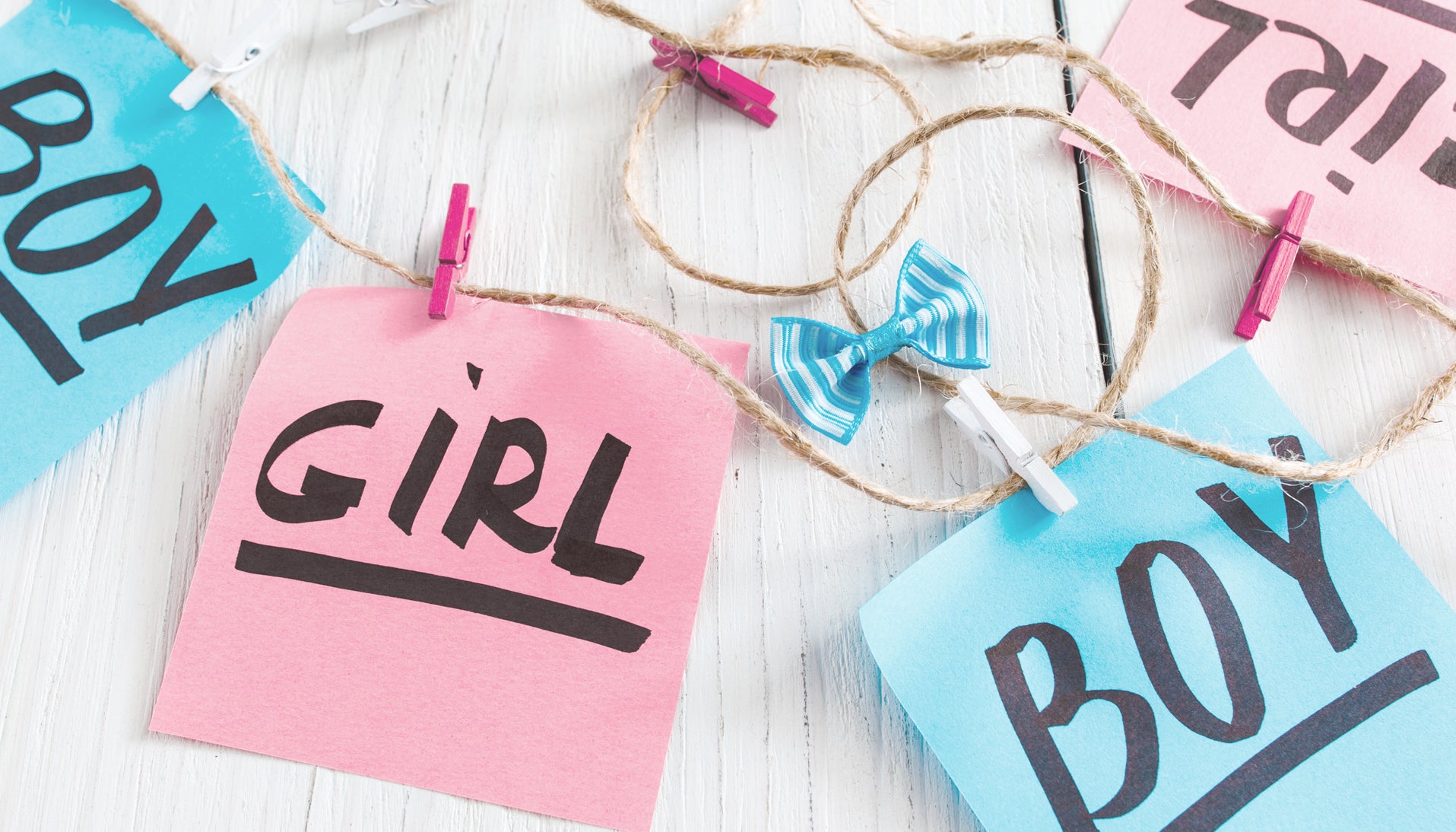What's the deal with gendered colors?
•Posted on June 10 2020

I went to a fantastic gender reveal party recently. If you don’t know how these work, let me first explain. When the soon-to-be parents get their first ultrasound revealing the baby’s sex, instead of announcing it out loud, the doctor will write “boy” or “girl” on a piece of paper and then will tuck it into an envelope. The parents pass the envelope to a trusted friend or relative who plans the party, designing a grand gesture for revealing whether the baby is a boy or a girl. In the moment of the reveal, the parents-to-be and the party guests all find out together.
At the gender reveal party that I recently attended, the sister of my friend planned the surprise. At the moment of the reveal, the soon-to-be mother sliced into the cake, and lo and behold, the frosting inside was pink!
Without any further explanation, everyone at the party knew that the baby was a girl. But if the same thing had happened before the 1940s, everyone would have thought the baby was going to be a boy. That’s because in the earlier half of the twentieth century, it was traditional to dress boys in pink and girls in blue.
Even more curious is the fact that, prior to the twentieth century, a cake with hidden pink frosting would have signified nothing at all. For centuries, parents dressed their babies up in simple white dresses – both the boys and the girls. The reasoning was born of practicality; diapers could be easily changed under a dress, and white could be bleached when inevitable messes occurred.
It wasn’t until the early 1900s that manufacturers started making their mark on gender-appropriate clothing, and initially what we think of as appropriate for boys and girls was swapped. A June 1918 article from the trade publication Earnshaw's Infants' Department said, “The generally accepted rule is pink for the boys, and blue for the girls. The reason is that pink, being a more decided and stronger color, is more suitable for the boy, while blue, which is more delicate and dainty, is prettier for the girl.”
In the 1940s, fashion flip-flopped. It was now fashionable for boys to wear blue and girls to wear pink. But that’s not quite the end of the story. The women’s liberation movement in the 60s and 70s brought a return to neutral styles and colors. Then, with the development of prenatal testing in the 80s, pinks and blues came back strong – parents could now purchase décor and clothing for their baby in preparation for his or her arrival into the world.
At Tesa Babe, we like to mix it up a little bit. Although you will still find shades of pinks and blues along the spectrum of colors we use, you’ll also discover many of the same patterns shared between our girls’ and boys’ clothing, and that’s the way we like it!